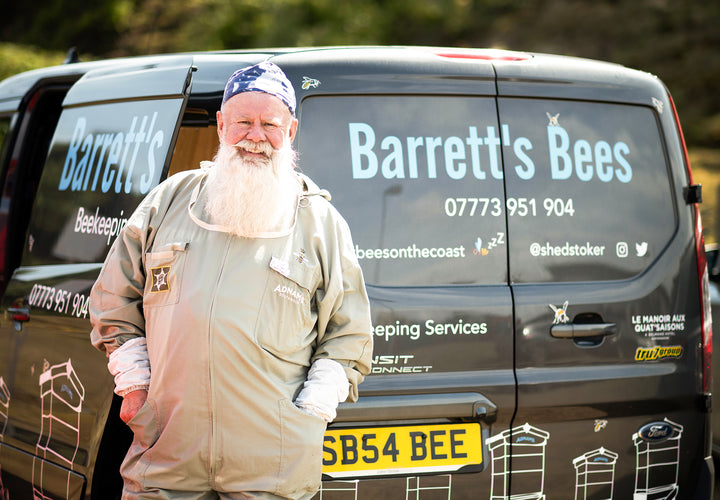Tucked away among the buzz of daily life here at Adnams lies a quieter kind of buzz. It’s the sound of thousands of honeybees going about their vital work. At the heart of this operation is Mr. Barrett, a passionate beekeeper whose journey with bees began in a school algebra class in 1968 and has since grown into his lifelong mission. Maintaining hives across an 18-mile Bee Corridor, to hand-delivering wax candles to a local Southwold café. Steve Barrett’s story is one of dedication and respect for nature's tiny pollinators. We chatted with him today to find out more about the importance of bees at Adnams and how as a retired crime reduction officer he has become key in Suffolk’s beekeeping landscape.
How many bees do you have here at Adnams?
We have got one active hive and five hives that don't have bees in at the moment, but that doesn't mean to say they won't have bees in there tomorrow. Bees are always on the lookout for new homes, that's their natural way of evolving. We get swarms that come and visit, they stop off in the hives once we are sure they're happy we can then move them to other parts of the Bee Corridor which is 18 miles long so we've got lots of choice.
How many bees would you say are in one hive?
A single hive can have up to 80 thousand bees. A queen bee when she is laying in the middle of the summertime, will lay 1,500 to 2,000 eggs a day; she can possibly lay more than her own body weight. You might ask, “How does she do that?" And my answer to you is, "I don't know." But she does. The colony senses if they have a successful queen, and then they plan to swarm. About 2,000 bees will move off with the queen to find another place, hopefully in one of our empty hives here.
What other types of bees do you have that have hives?
Technically, the original honeybee is Apis Mellifera, but all our bees here are cross breeds. The queen mates with up to 20 different drones and uses this to fertilise the eggs that she lays. Because of this you no longer get “pure” bees, they are all mixed.
What do you do with products from the bees?
Did you know at one time the wax was more valuable than the honey, and they used to use it for wax seals and for making candles, because that was before the electric light bulb? Nowadays, it’s the honey that beekeepers sell on. I am lucky because so many people who know I keep bees and the honey I sell subsidises the money that I spend to keep bees. My biggest customer, Adnams use it in the fantastic dishes in The Crown. The customers who come into the Crown say, "Who's this Mr. Barrett?" that appears on the menu with items containing honey. There's a story of our work with the bees at here at Adnams. It makes me very proud. As for the wax, I used to supply people who would care for horses, and they'd make tincture for the horses' hooves. Now I make candles, and I take them to a little community cafe called the Canteen in Southwold. I make them to order at home, and I take them on the bus every Saturday, then I usually head to The Lord Nelson for a pint or two.
It's been wonderful for us to spend the day with Steve and the bees. Head over to The Crown in Southwold, where Steve’s honey is featured in a range of delicious dishes, or take a jar home and pick up one of his handmade candles by popping into The Canteen a community café in Southwold that proudly stocks Steve’s products.

